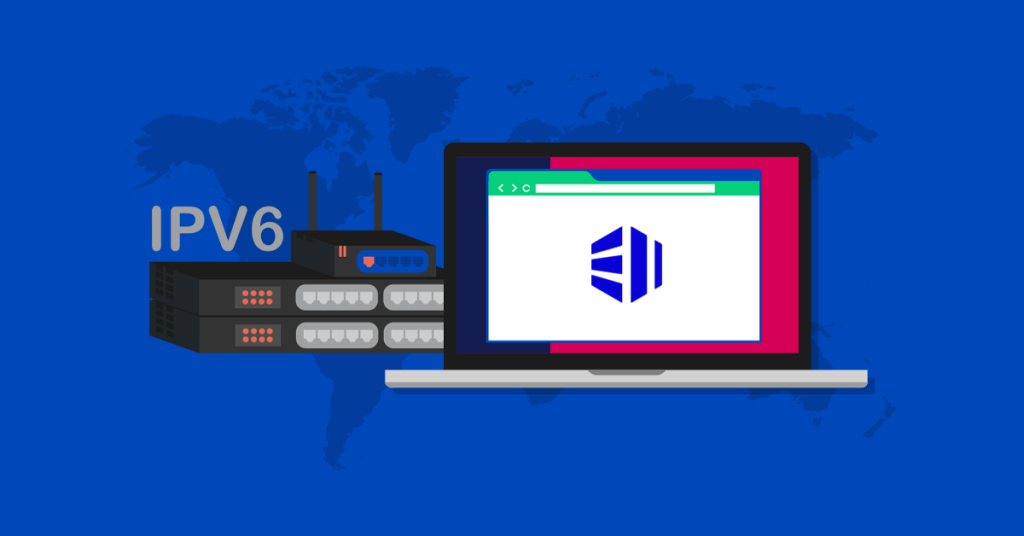Launched in June 2012, IPv6 marked an important step forward in internet technology. In this article, we shall look at what IPv6 is and discuss its purposes, its benefits and why it is an improvement on its predecessor, IPv4.
What is IPv6?
Despite being over a decade old, IPv6, or Internet Protocol version 6, is the latest version of the Internet Protocol (IP), the system that assigns addresses to devices on a network and directs internet traffic. If you think of the internet as a vast digital city, then IP addresses are similar to the unique postal addresses of each house. IPv6 offers a more expansive, organised and efficient addressing system than its predecessor.
The need for IPv6
To understand the need for IPv6, it’s essential to grasp the limitations of its predecessor, IPv4. Introduced in the early 1980s, well before the internet opened to the public, IPv4 uses a 32-bit addressing system, which allows for approximately 4.3 billion unique addresses. While this number might sound enormous, given the explosive expansion of the internet and the rapid growth in the number of devices, we have nearly exhausted all the available IPv4 addresses. If you think of the vast number of smartphones, smart home devices, computers and IoT (Internet of Things) gadgets around today, the world requires far more IP addresses than IPv4 is able to provide.
Benefits of IPv6
IPv6 offers a wide range of benefits compared to its predecessor. These include:
Vast address space
The main benefit of IPv6 is its unimaginably vast address space. By utilising a 128-bit addressing system rather than IPV4’s 32-bit, it can theoretically offer around 340 undecillion addresses. That 39-digit long number ensures the internet is more than well-equipped for future digital expansion.
Simplified packet headers
Packet headers are bits of data added to the beginning of a data packet that contain information about the packet’s source, destination and other relevant metadata. This information helps network devices process and route the packet correctly. Unlike IPv4, which has a variable header length, IPv6 has a fixed header length, making it simpler and more efficient for routers to process the packets.
Improved security
IPv6 was designed with security in mind. IPsec, a suite for securing IP communications, is mandatory for IPv6. While IPsec is also available for IPv4, its implementation isn’t as streamlined or as universally used as it is in IPv6.
Stateless address autoconfiguration
With IPv6, devices can automatically generate their IP address without needing a central server (like DHCP in IPv4). This feature improves the efficiency of network setups.
Enhanced mobility features
Mobile IPv6, an enhancement in the protocol, makes it easier for nodes to move between networks without losing their existing connections. This makes it easier for mobile devices to stay connected as they move from place to place.
Differences to IPv4
While we’ve already mentioned some of the benefits, there are some major differences between IPv6 and IPv4.
No need for NAT (Network Address Translation)
NAT, or Network Address Translation, is a networking method that alters IP addresses in packet headers as they pass through a router. It was developed to address the shortage of IPv4 addresses, allowing multiple devices on a private network to share one public IP address when accessing the Internet. With the colossal address space of IPv6, devices can now have their unique global address, eliminating the need for NAT. This simplifies routing and peer-to-peer applications.
Better Quality of Service (QoS)
IPv6 offers a better mechanism, known as the ‘Flow Label’ field, to identify and handle packets for real-time services. This aids in providing Quality of Service (QoS) for real-time services, like video conferencing or Voice over IP (VoIP), by ensuring that packets within a particular flow get consistent and predictable handling across the network.
Multicast
Unlike the broadcast nature of IPv4, IPv6 uses multicast to send data to multiple destinations, reducing the strain on networks. Multicast is a networking technique where a single data packet is sent from one source to multiple destinations simultaneously. Broadcast, used by IPv4, is where data is sent from one source to all possible destinations.
Future-proofing
IPv6 headers are designed to be extensible to accommodate future needs without overhauling the protocol. This ability to be modified, updated or expanded is why, despite being in use for over a decade, there has been no need to develop a new protocol.
Conclusion
The transition from IPv4 to IPv6 is vital to ensure the internet can expand smoothly and accommodate all the devices people will use in the future. As a result, it makes the internet more efficient, secure and future-proof. With its many benefits and improvements over IPv4, IPv6 is undeniably the future of internet protocols, and for website owners and businesses that rely on digital technology, adopting IPv6 is highly recommended.
Looking for IPv6-enabled managed servers? Visit our homepage.

